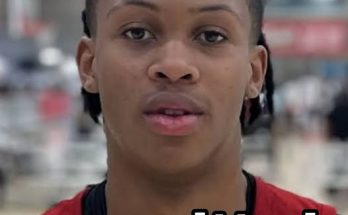Corey Hetherman, the defensive coordinator for the Miami Hurricanes football team, has earned a reputation for his commitment to developing strong, disciplined defensive units. His focus on linebackers has become a cornerstone of Miami’s defensive strategy. With Hetherman at the helm, the linebacking corps has shown significant growth, both in terms of individual performance and overall team defense. The role of the linebacker is one of the most critical positions on a football team, acting as the bridge between the defensive line and the secondary. Under Hetherman’s guidance, Miami’s linebackers have evolved into a more dynamic, efficient, and versatile group, capable of adjusting to a wide range of offensive schemes.
Hetherman’s journey as a coach began with a deep understanding of defensive football and a passion for player development. He has coached at various levels and with different programs, and his experiences have shaped his approach to coaching linebackers. One of Hetherman’s key philosophies is that a linebacker must be both a leader and a playmaker. These players are often called upon to read the quarterback, recognize offensive formations, and adjust to the flow of the game. For Hetherman, the most successful linebackers are those who possess a combination of athleticism, football IQ, and the ability to make adjustments on the fly.
When Hetherman took over as Miami’s defensive coordinator, the team was in need of a defensive resurgence. While the program had a storied history of defensive excellence, the linebacker position had been a weak point for a few seasons. A lack of consistency, missed tackles, and poor coverage skills were all contributing factors. However, Hetherman saw potential in the existing roster, and he set about implementing a strategy that focused on developing the linebackers’ skills across all aspects of the game.
The first area Hetherman focused on was improving the linebackers’ understanding of the game. He placed a significant emphasis on film study, encouraging players to break down their opponents’ offenses and understand tendencies. By learning how to anticipate plays and recognize formations, the linebackers were able to put themselves in better positions to succeed. Hetherman stressed that knowledge of the game could be the difference between making a play and getting beaten. This mental aspect of the game became a hallmark of Hetherman’s approach.
In addition to mental preparation, Hetherman worked tirelessly to improve the physical conditioning of the linebackers. The modern linebacker must be fast, agile, and strong enough to handle the physical demands of the position. Hetherman made sure that the linebackers were in peak physical condition, incorporating speed drills, agility workouts, and strength training into their regimen. This holistic approach to development allowed the linebackers to not only be more physically prepared for the demands of the game but also more explosive in their ability to close gaps and make plays.
As part of his focus on improving Miami’s linebacker play, Hetherman also instituted a more aggressive defensive scheme. While traditional linebacker roles had typically included tasks such as stopping the run and covering short passes, Hetherman pushed his linebackers to take on more dynamic and varied responsibilities. He implemented more blitzing schemes and pass-rushing opportunities for linebackers, allowing them to be disruptive forces in the backfield. Hetherman’s belief in linebacker versatility led to a dramatic increase in the amount of pressure the Miami defense was able to generate on opposing quarterbacks. This increased aggression also helped alleviate some of the pressure on the defensive line, allowing them to play with more freedom and unpredictability.
Another key area of improvement for Miami’s linebackers under Hetherman was their ability to cover the pass. Traditionally, linebackers have been known more for their role against the run, but Hetherman recognized the growing importance of pass coverage in modern football. He placed a heavy emphasis on improving the linebackers’ ability to cover tight ends, running backs, and even wide receivers in passing situations. By working on footwork, coverage techniques, and reading the quarterback’s eyes, Hetherman’s linebackers became better equipped to handle the passing game, making them more well-rounded and dangerous defenders.
Hetherman also prioritized creating a culture of accountability within the linebacking unit. He wanted his players to hold themselves and each other to high standards, both on and off the field. This culture of accountability extended to their preparation, attitude, and work ethic. Hetherman instilled in his linebackers a sense of pride in their role as leaders on the defense, and as a result, the unit began to develop a stronger bond and a shared commitment to success. This camaraderie translated into better communication on the field, as the linebackers were more in sync with each other, making quicker adjustments and playing more cohesively.
The impact of Hetherman’s coaching philosophy became evident in the performance of Miami’s linebackers on the field. The improvement in their tackling technique was immediate. Under his guidance, the linebackers became more disciplined in their approach to tackling, reducing missed tackles and improving their overall efficiency. Hetherman emphasized the importance of wrapping up the ball carrier, using proper technique to ensure that a player would bring down their opponent without allowing for extra yards. As a result, Miami’s defense became more formidable, especially against the run, where linebackers play a crucial role in stopping ball carriers before they gain significant yardage.
The improvement in coverage skills was also noticeable. Miami’s linebackers became more adept at covering passing routes, particularly in the short and intermediate range. This added dimension allowed the Hurricanes to better defend against high-powered offenses that relied on quick passes and short-yardage gains. The ability of the linebackers to stay with their assignments in coverage allowed the defense to be more flexible and creative, as they were no longer as reliant on the defensive backs to cover all passing threats.
The combination of improved tackling, enhanced pass coverage, and a more aggressive mindset in the trenches made Miami’s defense as a whole significantly stronger. Hetherman’s efforts were paying off, and his linebackers were becoming a key reason for the success of the defense. As the defense became more efficient, the entire team benefited, with the offense finding itself in better positions thanks to the defense’s ability to stop opponents on critical downs and force turnovers.
One of the most significant improvements under Hetherman’s leadership was the emergence of individual linebackers who began to shine in their roles. Some of the key players who flourished under his tutelage included rising stars who had previously flown under the radar. Hetherman’s ability to unlock the potential of his players was evident as these linebackers not only became more productive but also developed into leaders within the defense. This personal growth, both on the field and in their roles as team leaders, reflected the success of Hetherman’s coaching methods.
Corey Hetherman’s focus on linebacker development extended beyond just the physical and mental aspects of the game. He emphasized the importance of leadership and communication. Linebackers are often the quarterbacks of the defense, responsible for making adjustments and ensuring that the defensive unit is aligned correctly before the snap. Hetherman worked with his linebackers on improving their vocal presence on the field, ensuring they communicated well with their teammates and were able to make quick decisions in the heat of the moment. The result was a more fluid and effective defense, with players moving in unison and executing their assignments with precision.
Looking ahead, Corey Hetherman’s impact on Miami’s linebacker corps is poised to have a lasting effect. The program’s defensive culture is stronger, and the linebacker position, once a point of weakness, is now one of its greatest strengths. As Miami continues to recruit top-tier talent, Hetherman’s legacy as a coach who developed linebackers into multifaceted, dynamic players will continue to shape the Hurricanes’ defense. His ability to adapt to the evolving nature of the game and his commitment to developing players both mentally and physically will ensure that Miami remains competitive in the ever-changing landscape of college football.
In conclusion, Corey Hetherman has proven himself to be an outstanding defensive coordinator with a remarkable ability to develop linebackers into key players on the defense. Through his emphasis on film study, physical conditioning, aggressive schemes, and leadership, Hetherman has transformed Miami’s linebacker corps into one of the most well-rounded and effective groups in college football. His work with the linebackers has been instrumental in improving the overall performance of Miami’s defense, and his influence will continue to be felt for years to come. With Hetherman at the helm, the future of Miami’s defense looks bright, and the linebacker position will remain a key component of that success.



